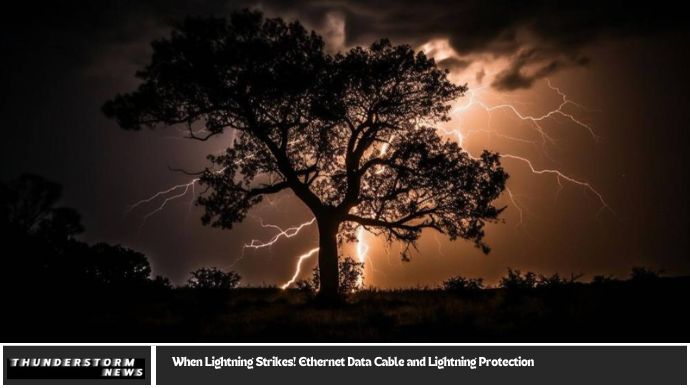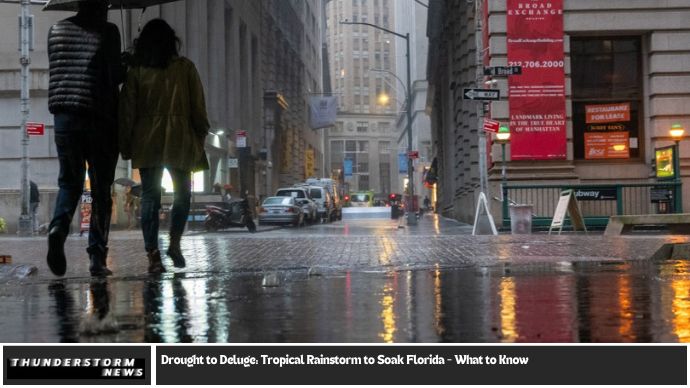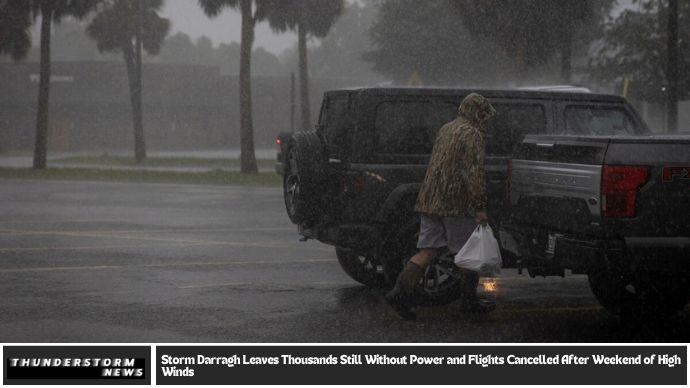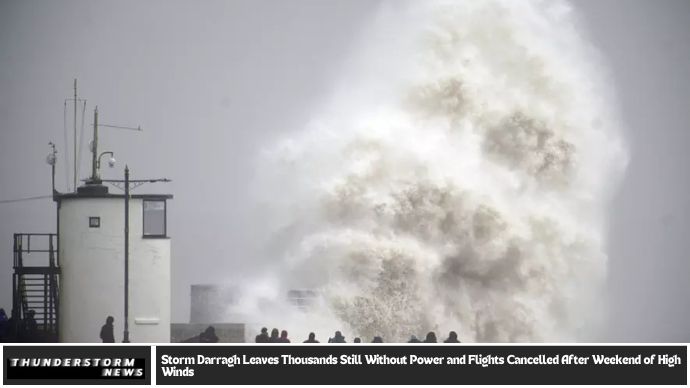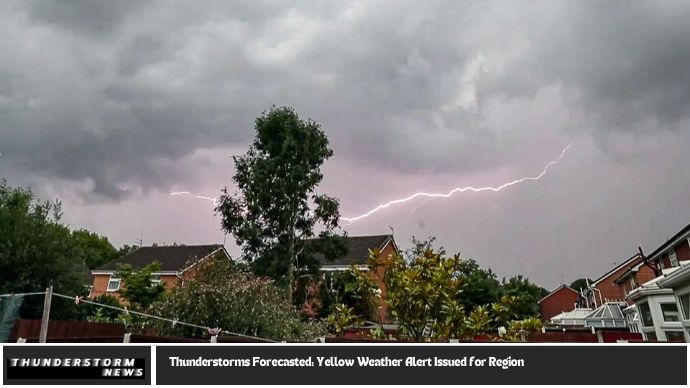When a thunderstorm rolls in, the last thing you want is for a lightning strike to cause havoc on your network. Lightning is unpredictable and powerful, and it can wreak havoc on sensitive electronics, including Ethernet data cables that power your home or business network. While we often think of lightning affecting power lines and causing outages, it can also cause significant damage to Ethernet cables, routers, and other devices that rely on stable internet connections.
If you’re relying on Ethernet data cables for smooth connectivity, it’s essential to take the necessary precautions to safeguard your equipment. In this article, we’ll explore the risks of lightning strikes, how they can impact your Ethernet cables, and the best lightning protection measures you can take to ensure your network stays safe and functional, no matter the weather outside.
Understanding Ethernet Data Cables and Their Vulnerability
What Are Ethernet Data Cables?
Ethernet data cables are the backbone of most internet and communication networks. These cables are used to transmit data between devices such as computers, routers, and switches. They are made of copper or fiber optics and come in various categories, such as Cat 5e, Cat 6, and Cat 6a, depending on the speed and bandwidth they support. Ethernet cables carry not only the internet connection but also crucial data for businesses and home networks.
How Lightning Affects Ethernet Data Cables
Lightning surges are sudden and intense increases in electrical voltage that can travel through any conductive material, including Ethernet cables. When a lightning strike occurs near your building or power lines, the electrical charge can travel through the ground and into the network’s cables. These surges can easily damage Ethernet cables, routers, switches, and any connected devices.
Even if your Ethernet cables are indoors, they are still vulnerable to indirect lightning strikes. This can happen when a nearby strike induces a voltage in the cables, causing a surge that can fry your equipment.
The Importance of Lightning Protection for Ethernet Cables
Why Lightning Protection Is Crucial for Your Network
The primary reason to install lightning protection for Ethernet cables is to safeguard your valuable equipment and data. A lightning strike can cause irreparable damage to both the cables and connected devices. This can result in expensive repairs, loss of crucial data, and network downtime that could take days or even weeks to resolve.
The Financial Impact of Lightning Strikes
The cost of replacing damaged equipment, recovering lost data, and the disruption to your business or personal activities can be overwhelming. In addition to the monetary cost, there’s also the downtime, which in business environments can result in lost productivity. For home users, the inconvenience of being without a stable internet connection can also be frustrating.
How Lightning Protection Works for Ethernet Cables
When a surge occurs due to a lightning strike, lightning protection devices, such as surge protectors, act as a barrier to direct the electrical energy safely away from your sensitive equipment. These devices are designed to absorb the excess voltage and redirect it into the ground, preventing the surge from reaching your Ethernet cables and devices.
Best Practices for Lightning Protection
Surge Protectors for Ethernet Cables
One of the most effective ways to protect your Ethernet data cables is to use surge protectors. These devices are essential for safeguarding against power surges caused by lightning strikes. Surge protectors for Ethernet cables are specifically designed to block excess voltage and can be easily installed between your network device (such as a router) and the Ethernet cable.
Types of surge protectors:
- Standalone Ethernet Surge Protectors – These are placed directly in the Ethernet line between devices.
- Power Surge Protectors with Ethernet Ports – These provide protection for both power cables and Ethernet lines simultaneously.
Grounding Your Network
Proper grounding is essential for any lightning protection system. Grounding ensures that any electrical energy caused by a lightning strike is directed safely into the ground rather than being absorbed by your network equipment. Properly grounded Ethernet cables and power systems can significantly reduce the risk of damage caused by a lightning surge.
Shielded Ethernet Cables
Another method to protect Ethernet cables from lightning surges is by using shielded Ethernet cables. These cables are equipped with an additional layer of protection that reduces the likelihood of electrical interference, including lightning strikes. Shielded cables are especially useful in environments where lightning strikes are more frequent, or where Ethernet cables are run along the exterior of a building.
Choosing the Right Lightning Protection Devices
Understanding the Different Protection Options
When selecting the best lightning protection devices, there are a few options to consider:
- Surge Protector Modules: These can be installed on your Ethernet cables to prevent surges.
- Whole-House Surge Protection Systems: These systems protect all electrical wiring in your home, including Ethernet cables, by stopping surges at the main electrical panel.
- Lightning Arrestors: These devices are typically used in industrial settings and provide robust protection for larger networks.
Installation of Lightning Protection Devices
Installing lightning protection devices involves ensuring that all Ethernet cables, power lines, and connected devices are properly protected. Depending on your setup, a professional technician may be required to install the devices correctly. It is essential to follow manufacturer guidelines to ensure your devices are fully operational and offer the level of protection required.
How to Maintain Lightning Protection for Your Ethernet Network
Regular Inspections
Maintaining your lightning protection system requires regular inspections to ensure it is functioning properly. Over time, surge protectors and other protection devices can wear out or become less effective. By regularly testing and replacing them, you can ensure that your Ethernet cables are always protected from lightning surges.
Upgrading Your Protection System
As technology evolves, so do lightning protection systems. Upgrading your protection system with the latest surge protectors or shielded cables can provide you with enhanced safety. This is especially important in high-risk areas where lightning strikes are more frequent.
The Role of Ethernet Cables in Business Continuity
Why Ethernet Cables Are Crucial for Businesses
For businesses, uninterrupted communication and data transfer are essential. Ethernet cables carry important information between devices, making them vital for smooth operations. Lightning-induced surges can cause network outages that disrupt communication and slow down productivity. By investing in proper lightning protection, businesses can ensure continuous operations and minimize the risks associated with network downtime.
Ensuring Data Integrity
Data loss due to lightning strikes can be catastrophic for businesses, especially those dealing with sensitive information. Having proper surge protection can safeguard against data corruption or loss, ensuring that your business can continue to operate smoothly without the fear of losing critical information.
May you also like it:
Thunderstorms Forecasted: Yellow Weather Alert Issued for Region
The Role of Tree Surgeons in Environmental Conservation
Broomfield Students Pile Up Donations for Their Flooded Peers
FAQs
1. What happens when lightning strikes an Ethernet cable?
When lightning strikes, it can send a surge of electricity through Ethernet cables, potentially damaging your network devices, cables, and causing data loss. Surge protectors can help mitigate this risk.
2. How can I protect my Ethernet cables from lightning?
Use surge protectors specifically designed for Ethernet cables, shielded Ethernet cables, and ensure proper grounding of your network system to protect your cables and devices.
3. Are shielded Ethernet cables more resistant to lightning damage?
Yes, shielded Ethernet cables provide an extra layer of protection against electrical interference, including lightning strikes, reducing the risk of damage.
4. Can surge protectors be used to protect Ethernet cables?
Yes, surge protectors designed for Ethernet cables can block electrical surges and direct them safely to the ground, preventing damage to your network devices.
5. Do I need to ground my Ethernet cables for lightning protection?
Yes, grounding your Ethernet cables is essential to ensure that any electrical surge from lightning is safely diverted into the ground rather than damaging your equipment.
6. How often should I check my lightning protection system?
Regular inspections every 6-12 months are recommended to ensure your lightning protection system is functioning effectively. You should replace surge protectors when they show signs of wear.
Conclusion
When lightning strikes, the last thing you want is to deal with the damage it causes to your network. Ethernet cables and connected devices are vulnerable to electrical surges from nearby lightning strikes, making lightning protection essential. By installing surge protectors, using shielded Ethernet cables, and ensuring proper grounding, you can protect your valuable equipment and maintain network stability.
Don’t wait until it’s too late—take steps today to safeguard your Ethernet cables from lightning strikes. Whether it’s for your home network or business continuity, investing in lightning protection will save you time, money, and frustration in the long run.

